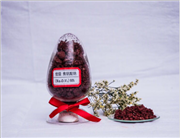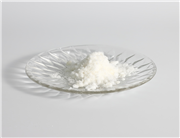Sodium chloroacetate is the sodium salt of chloroacetic acid.
| Name | Sodium chloroacetate | EINECS | 223-498-3 |
| CAS No. | 3926-62-3 | Density | 1.399 g/cm3 |
| PSA | 40.13000 | LogP | -1.02490 |
| Solubility | 440 g/L (20 °C) in water | Melting Point | 199 °C (dec.)(lit.)
|
| Formula | C2H3ClO2Na | Boiling Point | 189 °C at 760 mmHg |
| Molecular Weight | 116.479 | Flash Point | 71.5 °C |
| Transport Information | UN 2659 6.1/PG 3 | Appearance | white crystalline powder |
Appearance and properties: white powder
Density: 1.399g/cm3
Boiling point: 189ºC at 760 mmHg
Melting point: 199 °C (dec.)(lit.)
Flash point: 270°C
Refractive index: 1.438
Water solubility: 440 g/L (20 ºC)
Stability: Stable. Incompatible with strong oxidizing agents.
Storage conditions: the warehouse is ventilated and dry at low temperature, and stored separately from alkali and oxidizer
Production method
It is produced by the reaction of chloroacetic acid with sodium hydroxide (or sodium carbonate). Dissolve chloroacetic acid in anhydrous ethanol, cool to below 20℃, and slowly add sodium hydroxide saturated solution. After the reaction is completed, crystallization is precipitated by cooling. Filtered, washed with ethanol, distilled under reduced pressure and dried to produce the finished product. In general organic synthesis only sodium chloroacetate aqueous solution is required. In this case, the chloroacetic acid aqueous solution and sodium carbonate are reacted at 70℃, so that the reaction pH is 6.8-7, and the required sodium chloroacetic acid solution is obtained.
Use
Used in pesticide, medicine and other organic synthesis. Synthetic pharmaceuticals: amino acids, sedative synthesis, vitamins, adrenaline, H1 receptor antagonists, etc. Organic chemistry: binder, thioglycolic acid synthesis. Dye: dyeing auxiliaries, neutral brilliant blue. Daily chemical: Carboxymethyl cellulose, cosmetic additives, surfactants, shampoo bath, etc. Metal processing: rust prevention, cleaning and plating.









 China
China




